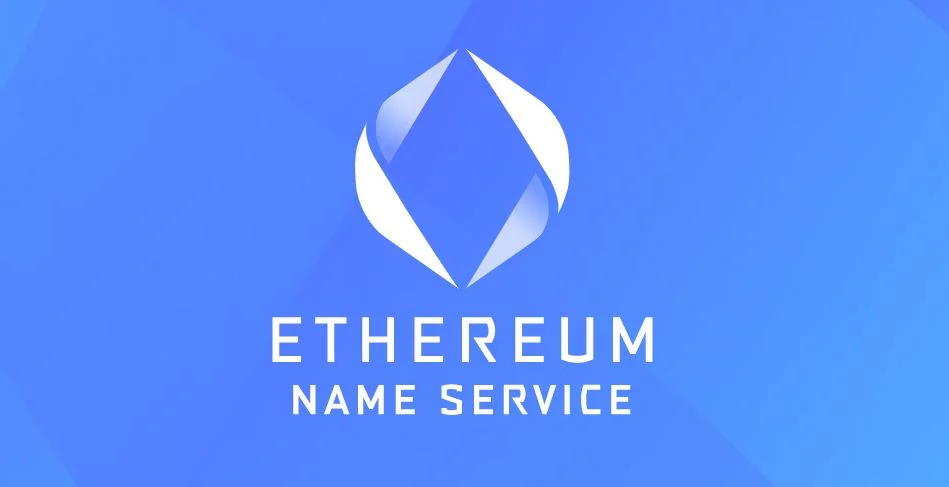Ethereum ETH -0.83% Name Service (ENS) registrations have surged over the past week, with data showing 108,000 ENS domains registered in the past seven days. This 216% increase has resulted in significant revenue growth, according to data released by ENS lead developer Nick Johnson. On Sunday, ENS made $684,000, an increase of $500,000 from the previous day.
ENS boom under cool bear market
The Ethereum Name Service (ENS) is a decentralized domain name protocol on Ethereum. ENS manages the issuance and updating of .eth domains, which are built on Ethereum, sold as NFTs, and can be linked to one’s cryptocurrency wallet.
According to data analyzed by Nick Johnson, a developer of the Ethereum Domain Name Service (ENS), ENS registered more than 100,000 registrations last week, including 11,042 registrations on July 2, 29,727 registrations on July 3, and July 4 registrations. New registrations were 34,000. Historical data shows that ENS registered 365,652 in May this year, with a revenue of 3,899.7ETH, both setting a record; in June this year, 122,000 new “.eth” domain names were registered, generating 2,500ETH in revenue. According to the latest data from NFTGo.io, the current total transaction volume of ENS has reached $94.99 million, with a market value of about $67.55 million.
What is the reason for the surge?
Daily ENS registrations have spiked recently, reaching over 30,000 new addresses on July 4. According to the analysis, this surge may have been due to the ENS address 000.eth being purchased for a record-breaking 300 ETH.
On July 4th, the “000.eth” ENS domain name was sold at a price of 300 ETH, setting the second-highest transaction price of an ENS domain name in history. Before the deal, the ENS domain name market had been restless for days. On July 3, the transaction volume of ENS domain names exceeded US$3.26 million, the highest transaction volume in the past month, and topped the NFT market transaction volume rankings. Judging from the transaction records, the most popular digital domain names in the market recently are 3 to 5 digits. With the soaring registration volume, the transaction volume of ENS in the past seven days has increased by 496.97%.
The Ethereum Name Service (ENS) works like the Internet’s DNS system, helping users find websites by name rather than number. ENS is not designed to replace DNS, but to work with it. But it provides a secure and decentralized way to manage website domains and send ETH and ERC20 tokens. Ethereum domains were first introduced to Web 3 in 2017. ENS DAO celebrates its fifth anniversary on May 4, 2022.
Like domain names on Web 2, ownership of a “.eth” domain name is subject to periodic payment of a fee in US dollars after initial registration. Some analysts believe that the outbreak of ENS domain names when the crypto asset market is deserted may be related to the low gas fee of the Ethereum network. According to the data of Ouke Cloud Chain on July 4, the current gas fee price is 13Gwei, which is lower than 94.52% of the time in history, making domain name creation and transaction costs lower. There are 1.4 million active domains on ENS. Updating a domain name also incurs gas costs, and due to the low gas costs, may generate a large number of new registrations. Gas prices ranged from $1.673 to $1.971 between July 2 and July 3, 2022, the lowest level in at least a year.
Utility of ENS
In the early days of the web, to visit a website, you needed to enter an IP address, a string of numbers that was difficult to remember and nearly impossible to guess. Then came human-readable names, making it easier for real people to navigate the World Wide Web. This transition turned 104.26.3.128 into Decrypt.co!
Encryption is still in the IP address phase: users need long, hard-to-remember addresses to access the pages they want. This is where the Ethereum Name Service comes in. It wants to make using cryptocurrency as easy as going online.
The Ethereum Name Service (ENS) is a lookup system. It links the information to the name. It’s not just a naming service for Ethereum; it’s a naming service built on Ethereum. It provides a safe and decentralized way to address resources using human-readable names. It is a fully distributed domain name provider that allows anyone to buy and manage domain names. This means you can send ETH or ERC20 tokens to “realsatoshi.eth” instead of “8e866f012fb8fb…”
ENS’ DAO organization
Nick Johnson and Alex Van de Sande of the Ethereum Foundation led the initial development of ENS. In November 2021, the project airdropped ENS tokens to users of the service and established a decentralized autonomous organization, or DAO, to govern it. (The legal entity associated with the DAO is True Names Limited.) ENS token holders can use their assets like corporate shareholders; they can make decisions about pricing, protocol changes, and how to manage funds in the treasury.
The introduction of ENS tokens has the added benefit of shifting the funding model of projects from grants to grants. ENS tokens can be traded on crypto exchanges for U.S. dollars and other cryptocurrencies, providing a financial lifeline to project developers.
Features of ENS
ENS is built on Ethereum’s smart contracts, making it more secure, private, and censorship-resistant than the Internet’s Domain Name Service (DNS). The team behind ENS sees the internet naming infrastructure as a fundamental component and as such should be open, decentralized, community-driven and non-profit. On a technical level, ENS can leverage the existing Ethereum ecosystem, which means it is highly programmable and can interact with other smart contracts than named.
Under the hood, ENS is basically two smart contracts. The ENS registry records all domains and subdomains, along with owner details and a link to a resolver, another smart contract that handles translation from names to addresses or other types of resources, and vice versa.
ENS operates similarly to the Internet’s DNS in that it has a layered system that allows domain owners full control over any subdomain. So realsatoshi.eth can create wallet.realsatoshi.eth and email.realsatoshi.eth.
How to register and adopt
Using an Ethereum wallet like MetaMask, you can visit manager.ens.domains to search for available domains. Once your domain is found, you will be guided through registration, which will ask you to confirm two transactions in your wallet. You must also choose the number of years for which the domain name will be registered at a rent of $5.00 per year (paid in ETH). Now, as the owner of the domain, you can set the different addresses or information you want this name and any subdomains to link to.
The best thing you can do with ENS is to replace your long, unreadable Ethereum address with a friendly, memorable ENS address (e.g. realsatoshi.eth). This makes it easier to receive crypto assets and enter your ENS address into an Ethereum dapp without having to copy and paste long public addresses.
Beyond that, the decentralized web is being built on a partnership between ENS and the file storage system IPFS. A good starting point is almonit.eth, where you can search a directory of decentralized websites. You can visit the site with MetaMask enabled, or thanks to their efforts in bridging Web3 and Internet DNS, you can add .link to a decentralized website and visit without MetaMask or a special browser they.
ENS is not just .eth. In 2021, ENS will allow websites with any of the more than 1,300 top-level domains (such as those ending in .com, .org, or .edu) to integrate directly with ENS. So if you own realsatoshi.org, you can link it directly to realsatoshi.eth so that visitors can view the content and send money to the exact same place.






